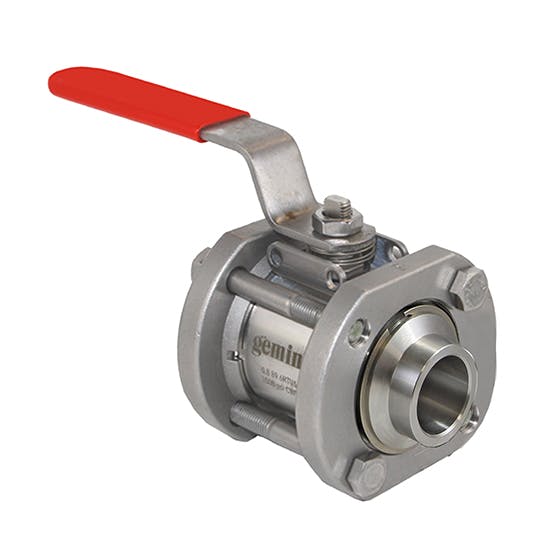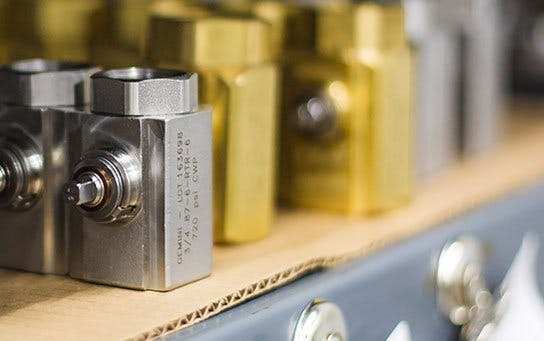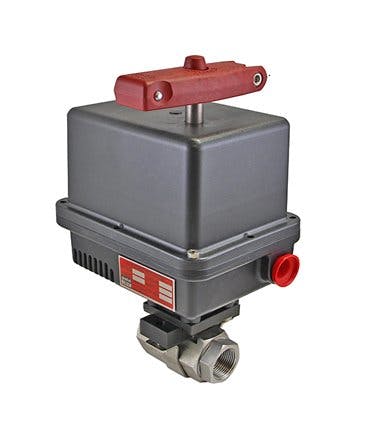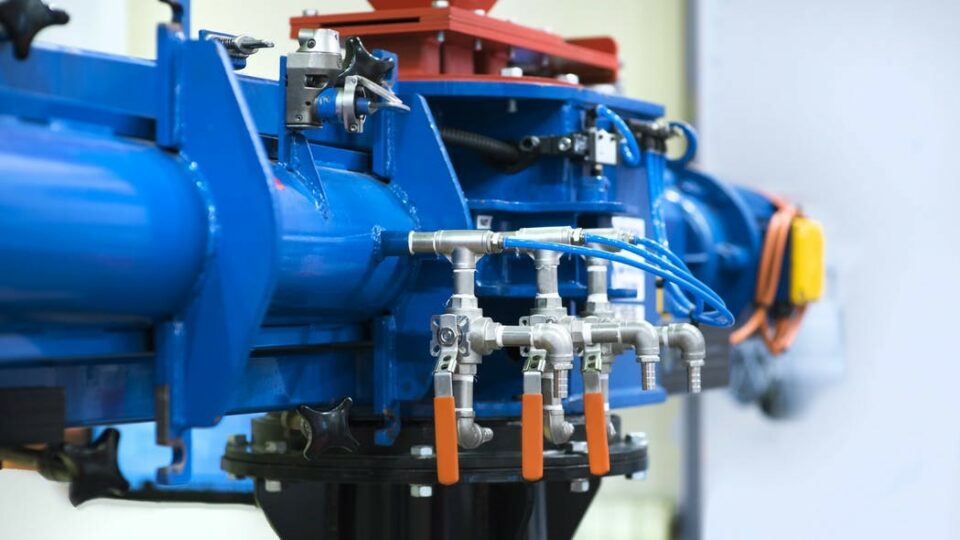The inherent design of ball valves makes them ideal for on/off control of a wide variety of media, but what exactly should you expect when it comes to service life? A quick Google search for “ball valve lifespan” turns up a blanket response of 100,000 cycles. If only the real answer was that simple.
The reality is that the lifespan of your ball valves depends on a handful of factors. Ball valves in high-cycle or high-pressure settings will need servicing or replacing more often than those with infrequent operations — and that’s before factoring in any media-specific nuances.
You will see that the majority of ball valve suppliers do set guarantees for the life expectancy of their products because there are so many factors to consider first. Here’s a closer look at five that will impact the longevity of your ball valves.
1. Media
Ball valves are traditionally used for the on/off control of gases and liquids, including water, oil, air and chemicals.
Media with suspended particulates that are abrasive in nature can cause the valve seals to fail prematurely. This can come in the form of a leak or, depending on the severity of the media characteristics, the ball valve operating torque may rise dramatically ultimately causing actuation failure.
Takeaways
Use ball valves only for the on/off control of liquids or gases. Avoid abrasive media.

2. Materials
The right materials for your ball valve will depend on the type of liquid or gas flowing through the valve. Some of the most common materials used to manufacture ball valves include stainless steel, PVC, brass and bronze.
The material of both the valve body and the seals must be compatible with temperature and pressure ratings, as well as the chemical makeup of the gas or liquid that will flow through the valve.
Here’s a closer look at material options:
- Metals: Stainless steel, bronze and brass are highly durable and corrosion-resistant. Metal materials are the best choice for high-temperature applications.
- PVC: Polyvinyl chloride is a type of plastic that offers more flexibility than metal valves. However, PVC is not as durable as metal options and is not designed for high temperatures (over 140°F) or high-pressure applications. PVC ball valves tend to have shorter lifespans than other options.
- PTFE: Polytetrafluorethylene is used for most ball valve seals and is compatible with nearly all types of media. This material has a high melting point, but applications with very high temperatures should use metal or ceramic seals.
- Elastomers: Elastomers such as Viton and EPDM are also utilized in certain ball valve designs. When using valves that include an elastomer, it is important to ensure that the material used is compatible with your application media.
One resource that is commonly used for identifying chemical compatibility is the Cole-Parmer Chemical Compatibility Database. This is a good tool for determining basic chemical compatibility between the valve components and the application media.
Where the materials come from is just as important. Some resellers may source ball valves from manufacturers around the world, so there is always the possibility of design inconsistencies or functionality issues. Valves from domestic manufacturers typically offer more reliable and long-lasting products.
Takeaways
Plastic ball valves are economical but should not be used in high-temperature settings and tend to have shorter lifespans compared to metal options. Pressurized gases should be used with metal valves for maximum safety. It is important to ensure that both the valve body and seal materials are safe for use with the media that will be flowing through the valve.

3. Temperature & pressure ratings
When determining suitability, it is important to consider both the valve media pressure and temperature, commonly referred to as pressure/temperature rating. In general, as the media pressure increases, the media temperature must decrease, and vise versa.
The pressure/temperature rating will influence the proper materials, valve design and valve seal materials that should be used. This, combined with cycle frequency, are all factors that have a significant affect on the lifespan of a ball valve. A ball valve used in an application that is close to the pressure/temperature rating may last years if the valve is cycled (turned on or off) infrequently. The same valve in the same application may need frequent replacement if the valve is cycled often.
Takeaways
The closer your specific valve media is to the upper limits of the valve pressure/temperature rating, the fewer cycles (on/off) the ball valve will yield. If you still have questions, reach out to the ball valve manufacturer for advice.
4. Actuation
There is more than one way to power a ball valve. Manual ball valves are controlled by turning a lever or handle on top of the valve. Since these valves must be powered by an operator, they are not the right choice for high-cycle applications or for valves located in hard-to-reach places.
Actuated ball valves can be automated and controlled remotely through the addition of a power source. You will likely see the following options:
- Pneumatic actuated ball valves are used in environments with access to compressed air. They provide fast cycle times and high durability.
- Electric actuated ball valves should be used in applications that require low cycle speeds or those with no access to compressed air. The slower index times can help prevent water hammer in high-pressure applications. You might also see these called “motorized ball valves.”
- Hydraulic actuated ball valves operate on similar principles as pneumatics but offer more torque output. These are typically more expensive than other actuator options and might require additional components for proper functioning.
Takeaways
Although pneumatic actuators are the most durable options, in most applications all actuator types (pneumatic, electric, hydraulic) will long outlast the ball valve they operate. Regardless of the actuator that is chosen, it will likely last the lifespan of multiple valves.

5. Maintenance
With an actuated ball valve, the valve seals are almost always the first component to fail, usually in the form of a leak either from the stem seal or seats noted by downstream leakage when the valve is in the off position. For this reason, it is common to attempt to repair the valve by replacing the soft seals.
If you are planning to maintain the valve in your application, it is important to select a valve that is designed for serviceability, such as a three-piece ball valve. These valves are designed so that the center section and seals of the valve can be easily and safely replaced. One-piece and two-piece ball valves are not designed to be taken apart and should be replaced rather than repaired. The good news is that the replacement ball valve cost is a small percentage of the overall cost of the actuated ball valve assembly. Depending on the brand and quality of the actuator, one actuator will host several ball valves before needing replacement.
Takeaways
An actuator will normally last the lifespan of multiple ball valves, so you should expect to replace the ball valve more frequently than the actuator. In applications where the valve will be subjected to extreme wear and tear, a three-piece ball valve should be considered to allow for serviceability of the valve.
Ultimately, wear and tear are expected no matter the media or application. But with proper installation and the right material construction, you can maximize the time your ball valves spend in service and, in turn, get the most bang for your buck.
George Packard is VP of marketing at Gemini Valve. Hemanages the creation of digital marketing mediums to facilitate the best user experience with the company’s products and services. With previous experience in sales, Packard mentors corporate customer support representatives and is involved in product sales, support and post-sales follow up.
Gemini Valve


